Robot Vacuum Cleaner: Human Tested

Robot vacuum cleaner - for many of us, these home appliances are associated with the iRobot brand. But today the number of brands that can be found on the market has more than one dozen. Yes, iRobot remains one of the most recognizable, but Samsung devices, LG devices and a number of less famous Asians make their way to the leaders as well. The price of vacuum cleaner starts from 8-9 thousand, and then flies into space - you can find models for both 30 and 40 thousand. The most running, of course, this budget vacuum cleaners cost about 10 thousand rubles. Plus or minus.
It is these models that we decided to take in the Yulmart online store in order to understand whether they are suitable for something other than a vehicle for cats. We took the model and the more expensive - from LG - I wonder how the strength of the brand affects the quality of cleaning.
As a result, in our hands were:
Ariete 2711

')
Kitfort CT-501

Panda x500
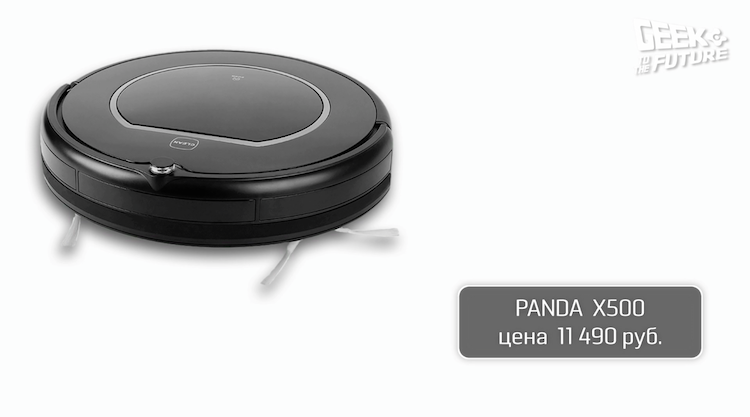
Qwikk XRobot 700
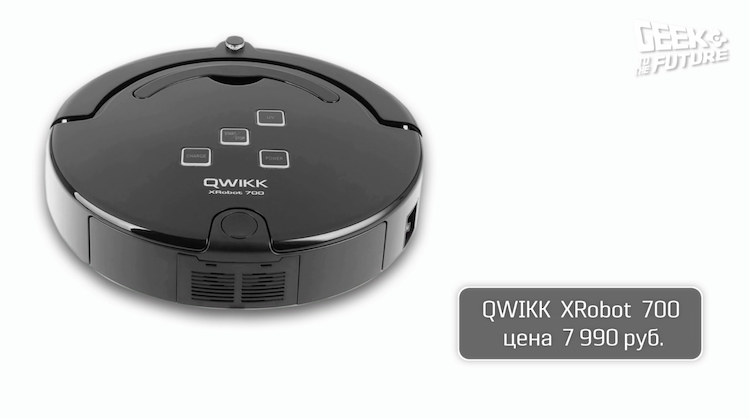
LG Hom-Bot 2.0
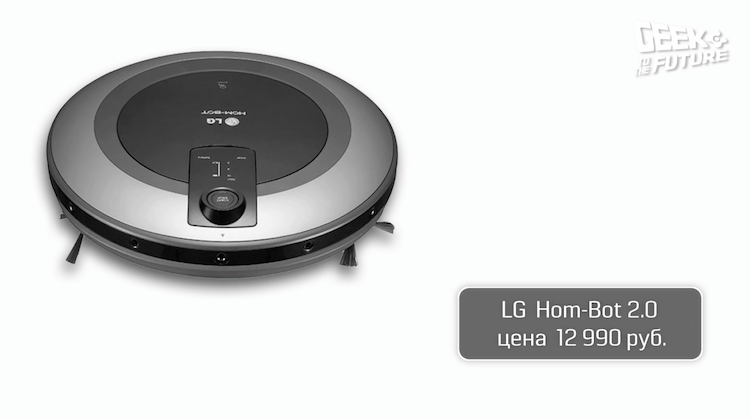
Testing vacuum cleaner - the process is somewhat funny, but somewhere meditative. And in order not to go completely into nirvana, we decided to formalize the field trials. First of all, we checked how these devices generally cope with different types of garbage - we had confetti, rice, millet, peas and a couple of coins - what vacuum cleaners usually eat. At the same time, we appreciated the algorithm by which these household robots make their way. Then, they checked how they can overcome obstacles and how much the built-in sensors can protect them from falls and jams.
What are these vacuum cleaners and what can we expect from them. In its mass - it is a kind of pancake, up to 10 centimeters high, equipped with a main cylindrical brush (and sometimes without it) and one or two side brushes. Inside - a dust collector equipped with the simplest filters. By the way, vertical dust collectors are more convenient than retractable rear - in the first case, it is almost impossible to scatter the collected garbage.

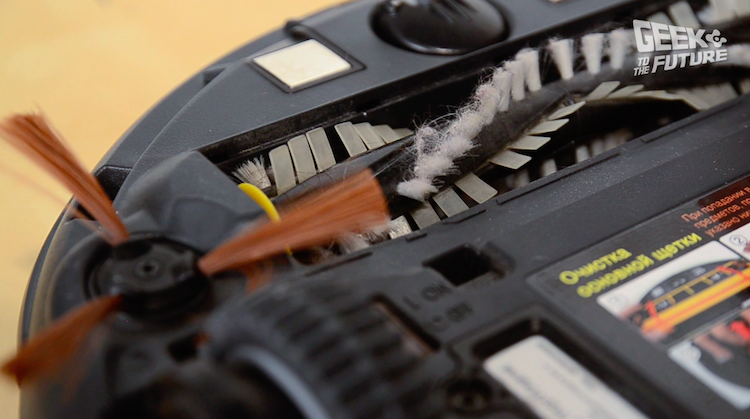

The most interesting thing in robot vacuum cleaners is a set of sensors that help the device navigate the terrain, as well as avoid obstacles and dangers - walls, stairs, furniture, etc. Expensive models are equipped with lasers and cameras, in the budget you will - as in our case - most likely you will find only infrared sensors.


What and how vacuum cleaner clean. As the collective experience shows, they do the best with all small things - flour, crumbs, cereals, ordinary household dust and animal hair. The device with one side brush in our opinion spends more effort on cleaning, dispersing debris around the site or driving it into corners. Two side - PROFIT !!! They throw rubbish at each other and as a result, he gets into the dust collector with a greater probability. We draw conclusions: two side brushes are better. But they need to be in reserve - wear out quickly (experienced users take a year right away). Large trash budget robots can not afford - he can kick off a pea, and in 99 percent of cases he simply ignores small coins. Add that socks robots or circling, or wound on the shaft, and then blocked and squeal plaintively.
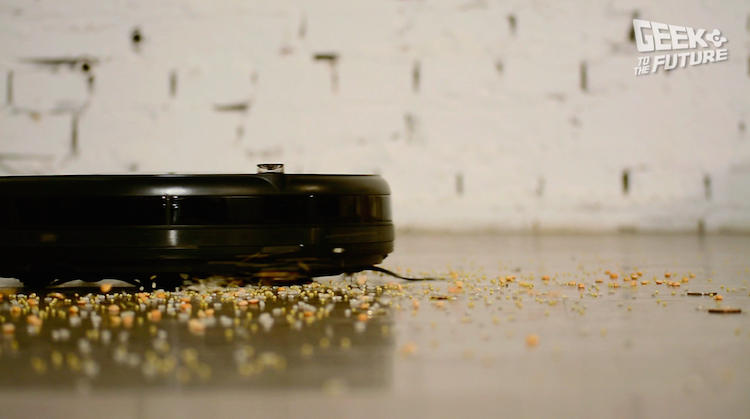
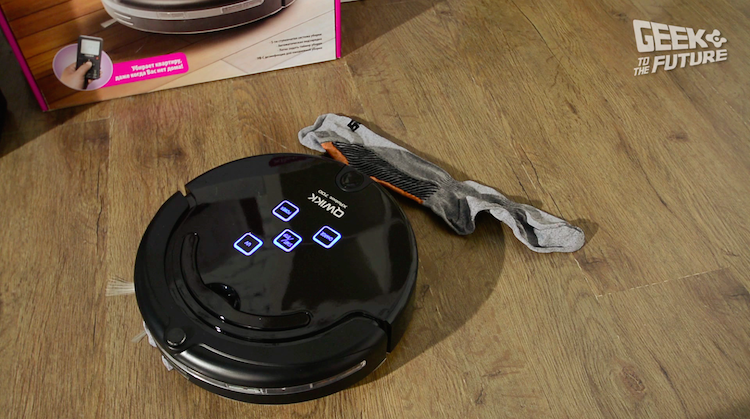
If we talk about moving algorithms, then the vacuum cleaners are divided into two types - boring and funny guys. The first, such as LG, marks out the territory, having swept once around the perimeter, and then they go in a zigzag, dividing the area into square sectors. The second ones can move from wall to wall diagonally, stop and start to move in a spiral, then take up the old again - it looks like a chaotic movement, but on the whole “funny guys” also do their job well. And some after such dances later also come back on charge independently.
As for the obstacles, even low-cost vacuum cleaners do quite well with them, overcoming barriers of an average height of one to one and a half centimeters. Models are easier equipped with bumpers, robots more difficult to screw a little more sensors. Carpets and rugs are not available to all vacuum cleaners - even if they deftly call in on them, then they can just as easily get stuck on them. Everything is fine with drop-prevention sensors - all of our robot vacuum cleaners can even tack on their own box without the risk of falling off ( see video ). There remains a small chance of getting stuck under the sofa or nightstand, but this “ability” of the robot can only be tested experimentally.
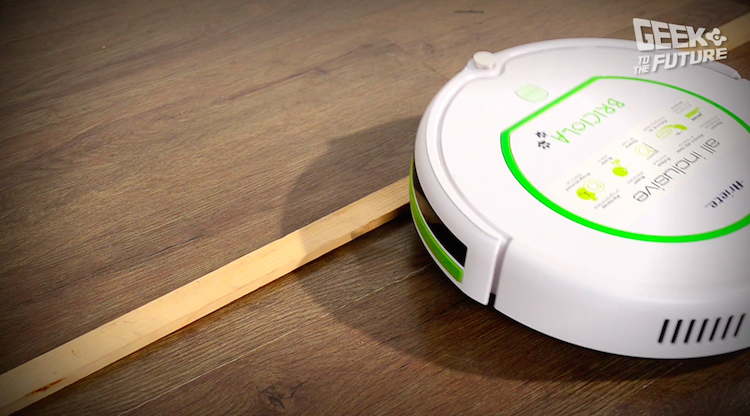
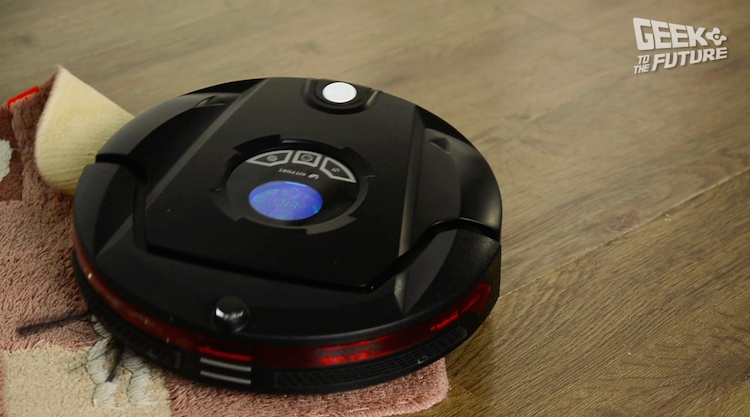
In the commercials, colorfully telling about the prospects that open after the purchase of a robot vacuum cleaner, it is often emphasized that these home appliances are quiet and you can watch the TV and take a quiet sleep as you fuss. In principle, if you have a non-dilapidated nervous system, this is true. Yes, robots are buzzing clearly quieter than a household vacuum cleaner. But the level of noise they create can be quite compared with powerful household fans. And some of them literally clang moving on the tile and with a squeaky creak move light tables and chairs.
A couple of useful "chips" that state employees also have - an independent return to the charger and virtual walls. On the whole, their devices easily cope with the task of returning to the base, although in some cases they can search for it indefinitely. By the way, vacuum cleaners are supposed to be oriented in multi-room apartments, but for a number of reasons this is not quite the case - their route is often disturbed, for example, with a lot of light furniture or cords / cables on the floor. And here can be useful "virtual walls". Small infrared beacons that create an invisible barrier to a vacuum cleaner - for some robots they come with the kit.
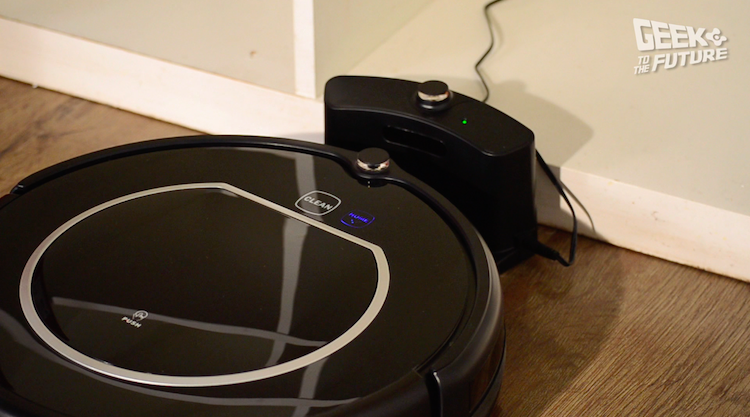

An important point that many happy new owners forget - consumables. Caring manufacturers often pack new vacuum cleaners with replaceable sets, which is good, but it is important to remember that, depending on the intensity of use, you will have to replace filters and brushes at least once every six months. Therefore, buying a robot vacuum cleaner, keep it in your head (consumables for all devices from our test can be purchased in Russia, although - for some models - and not without hassle).

Two main conclusions that we made testing these devices. First of all, we have, rather, intelligent electric power supplies rather than robotic vacuum cleaners. And this applies to devices of different price categories - the power of their absorption is very small compared to conventional household vacuum cleaners. Secondly, vacuum cleaner disciplines the owners and teach them to order - yes, yes! - small things can block the vacuum cleaner, and, for example, thick wires often turn into insurmountable obstacles. From here, the conclusion is practical - vacuum cleaning robots can hardly be used to restore cleanliness, but rather to maintain it.
If we talk about the models that we have tested, in general, all budget vacuum cleaners are very close in terms of the possibilities and quality of cleaning and differ only constructively - the placement of the dust collector, the presence or absence of the main and side brushes. Hom-Bot from LG turned out to be a little more intelligent and quiet, but the difference in cost between the cheapest model Qwikk Xrobot 700 is more than 3 thousand rubles.
Subscribe to the Geek to the Future channel , join groups in social networks and do not forget - the future is in our hands!
Source: https://habr.com/ru/post/224095/
All Articles